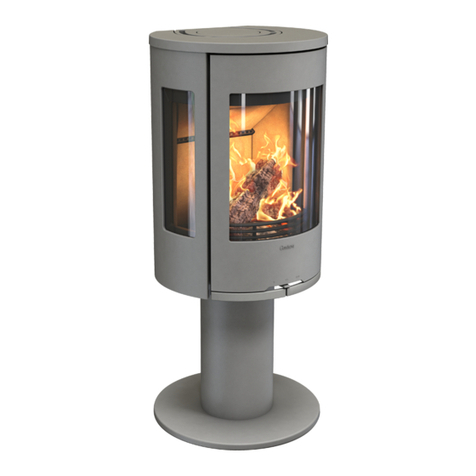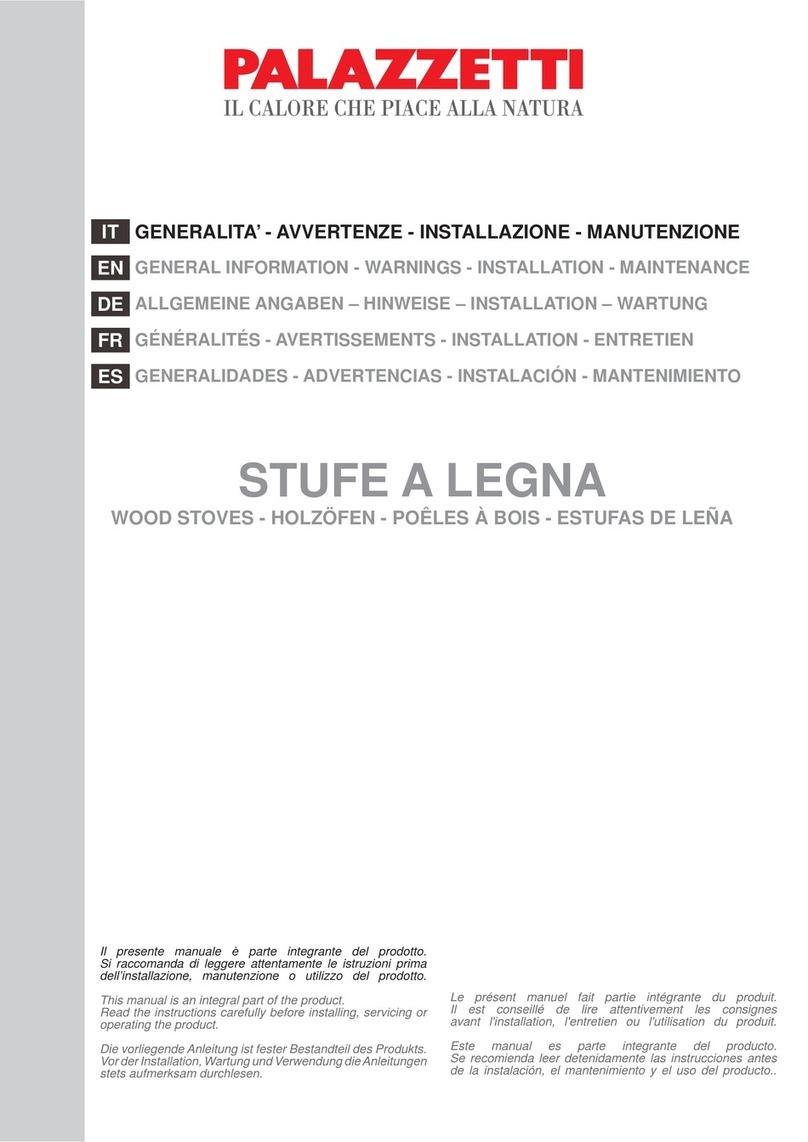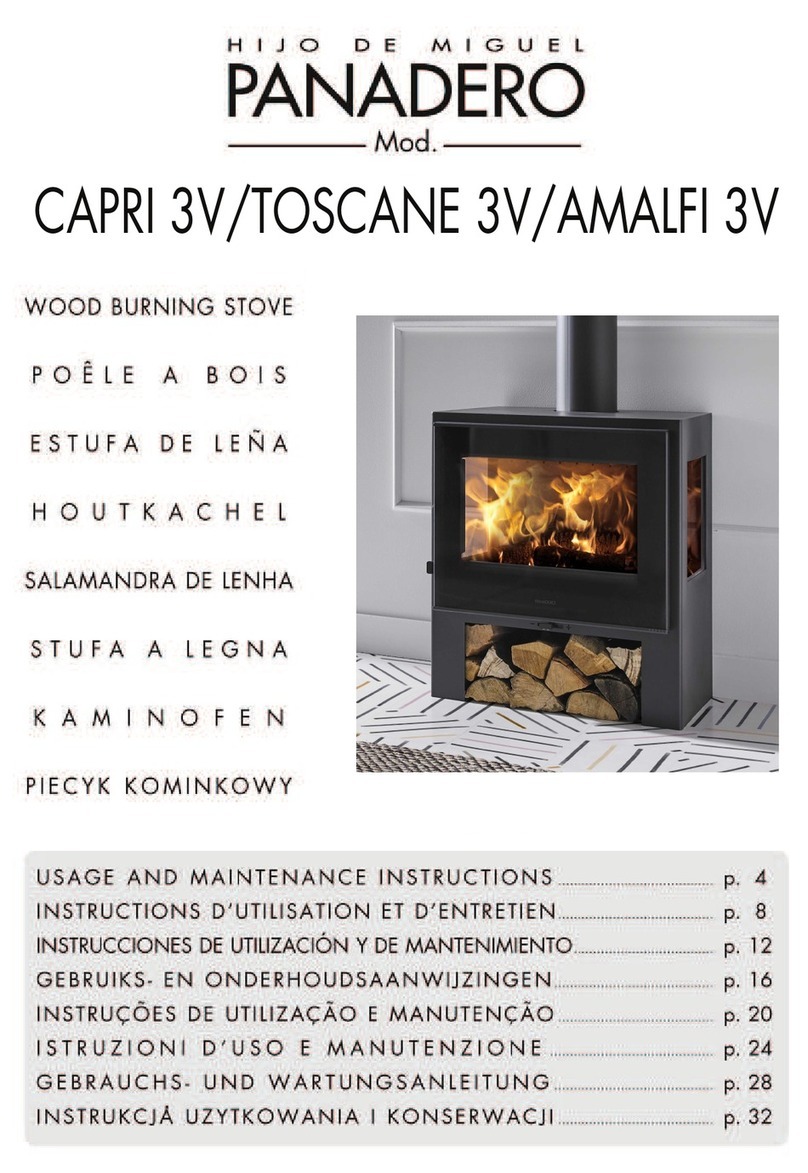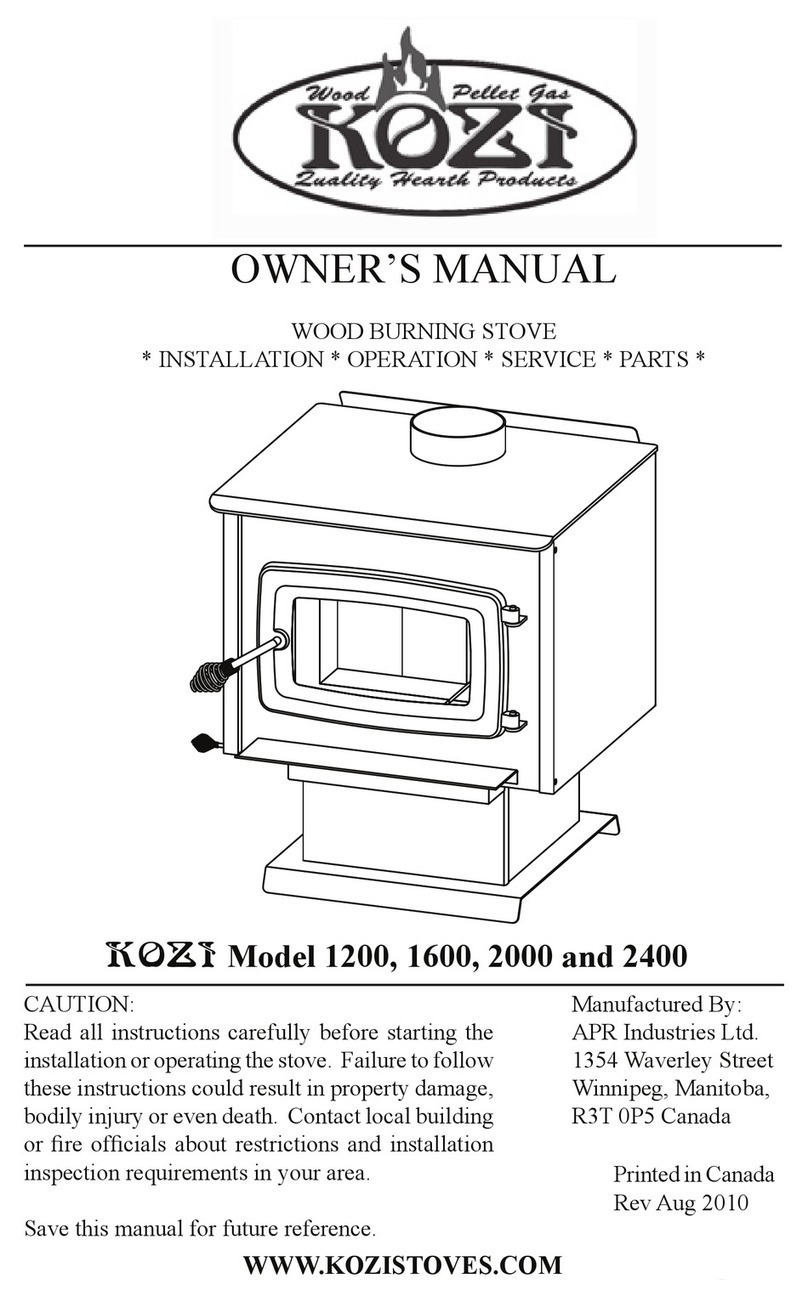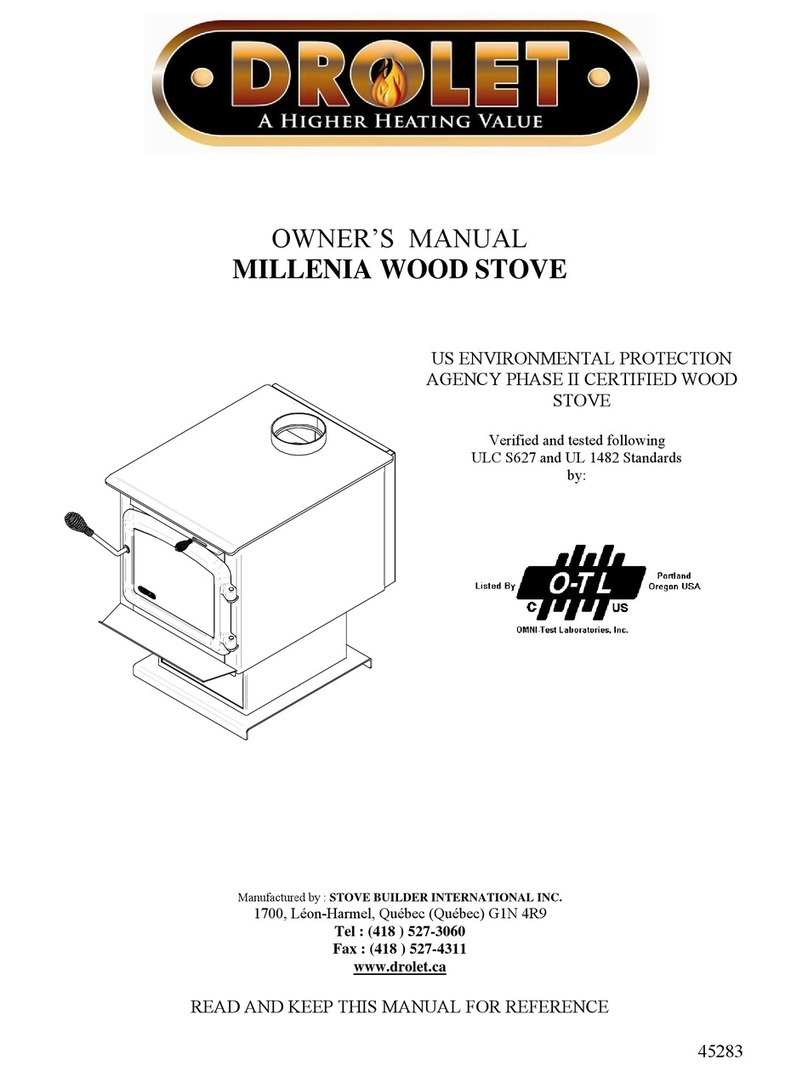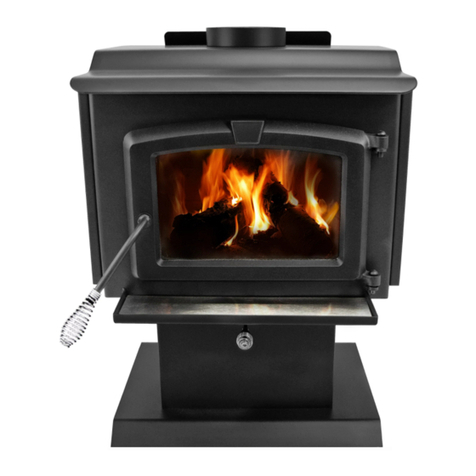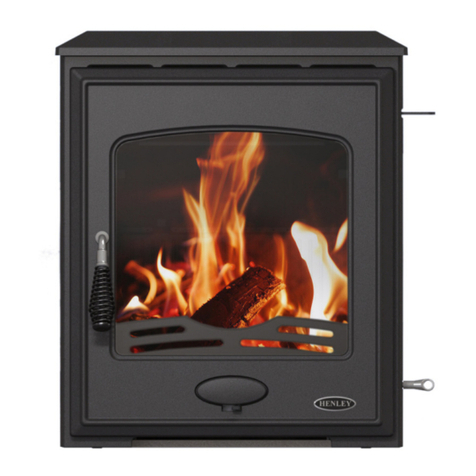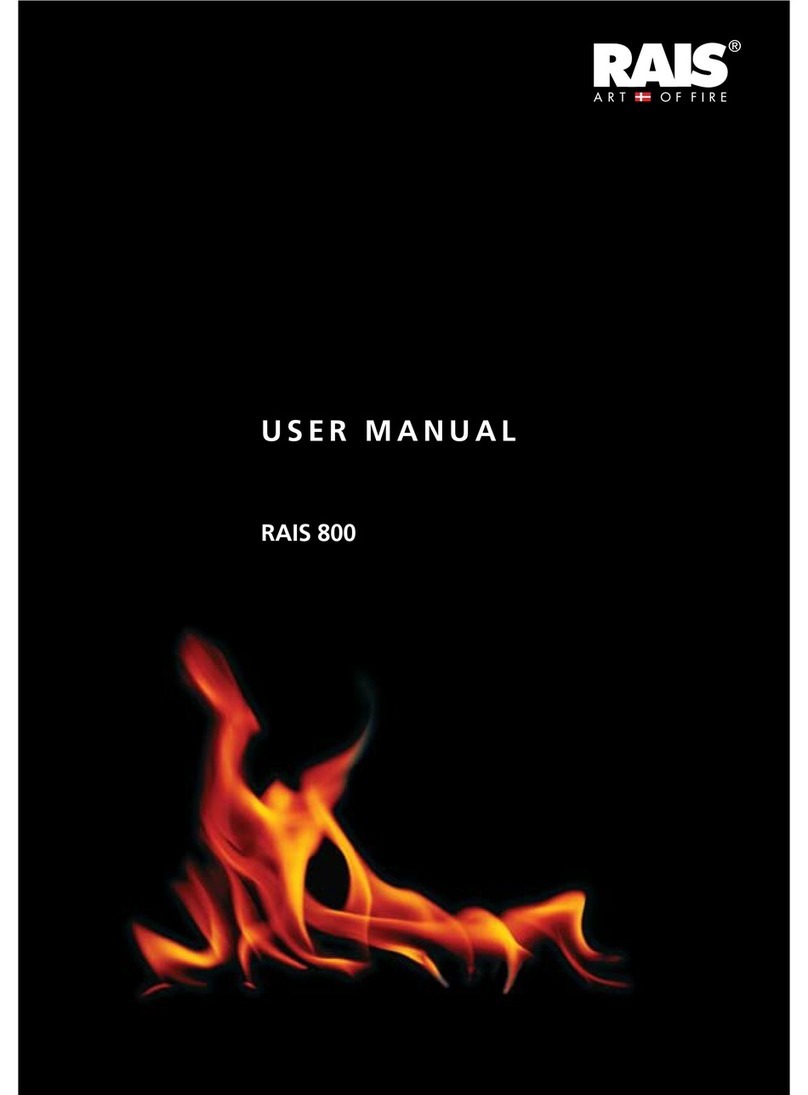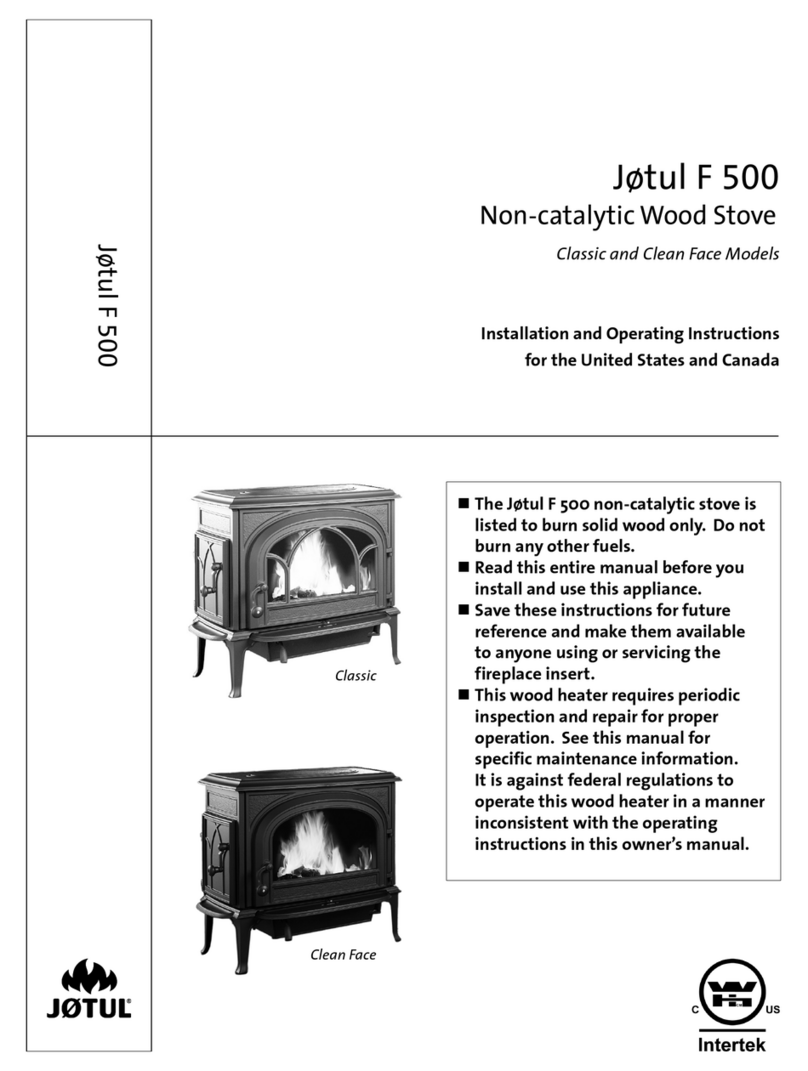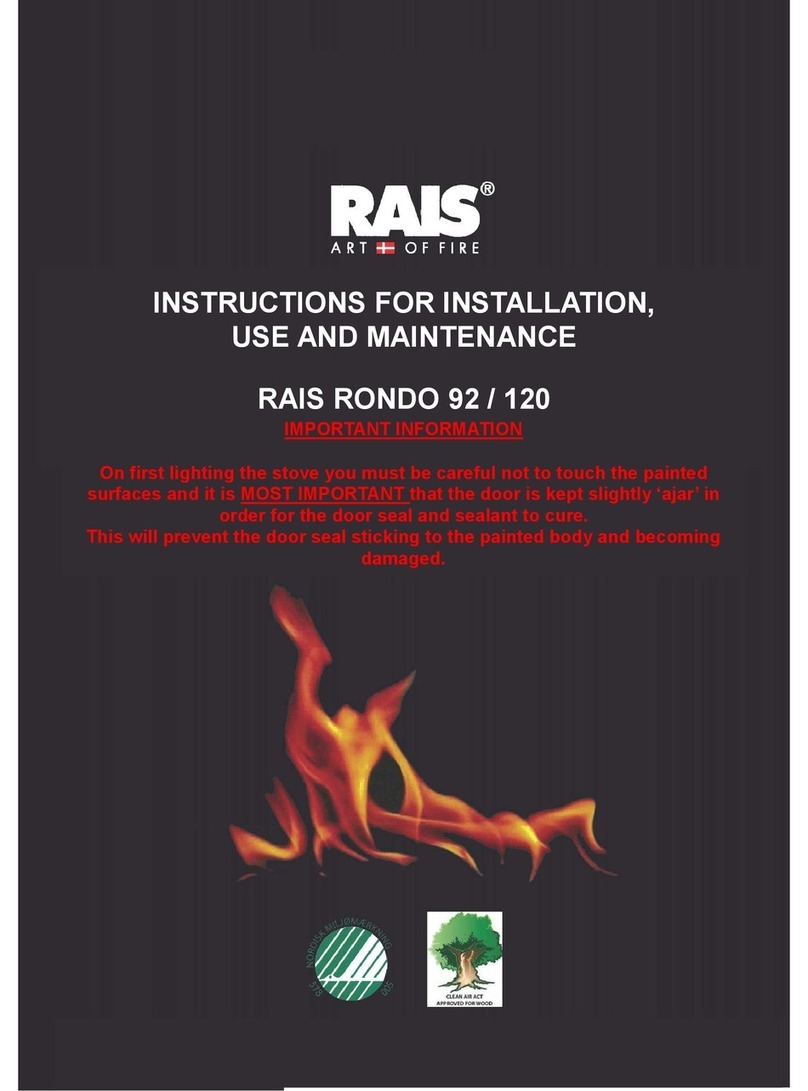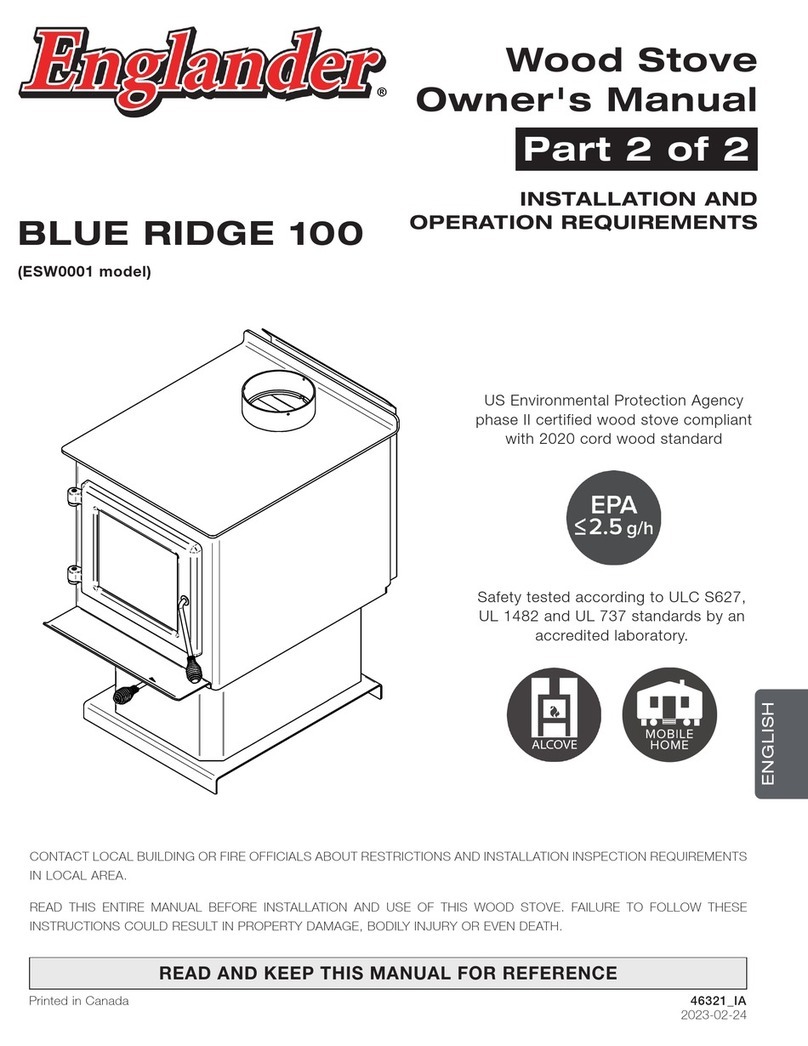
56720819898 A 05/2016
USER INFORMATION
ADDITIONAL INFORMATION BEFORE INSTALLING
YOUR WOOD STOVE
• Once you determine the room in which your wood stove will be
installed, install a carbon monoxide alarm in the same room.
This alarm should be installed at least 150mm below the ceiling.
• All local regulations, including those referring to national and
European standards need to be complied with when installing
the appliance.
• Any air inlet grilles are to be positioned so they are not liable to
blockage
• Do not use your appliance as an incinerator. Only burn well
seasoned wood.
• A minimum of annual maintenance is necessary to be sure
your appliance is running optimally. All maintenance must be
performed by a competent engineer or Chimney Sweep. Access
should be provided for regular cleaning of the appliance, ue
gas connector and chimney ue
• Do not operate your appliance with the fueling door open. Only
operate with the fueling door open during ignition, refueling
and removal of residue material to prevent fume spillage.
Operating with the fueling door open can cause over-ring of
your appliance. Operation with the door open can cause excess
smoke.
• WARNING: Some parts of your appliance, especially the
external surfaces, will be hot to touch when in operation. Due
care should be taken to prevent burns. Keep children away from
the appliance during operation.
• This appliance is NOT suitable for installation in a shared ue
system.
• This appliance is suitable and has been tested for intermittent
operation.
• There must be no unauthorized modication of the appliance
THE CLEAN AIR ACT 1993 AND SMOKE CONTROL
AREAS
Under the Clean Air Act local authorities may declare the whole
or part of the district of the authority to be a smoke control area. It
is an offence to emit smoke from a chimney of a building, from a
furnace or from any xed boiler if located in a designated smoke
control area. It is also an offence to acquire an “unauthorized
fuel” for use within a smoke control area unless it is used in an
“exempt” appliance (“exempted” from the controls which generally
apply in the smoke control area).
In England, appliances are exempted by publication on a list
by the Secretary of State in accordance with changes made to
sections 20 and 21 of the Clean Air Act 1993 by section 15 of
the Deregulation Act 2015. Similarly in Scotland, appliances are
exempted by publication on a list by Scottish Ministers under
section 50 of the Regulatory Reform (Scotland) Act 2014.
In Wales and Northern Ireland, these are authorised by
regulations made by Welsh Ministers and by the Department of
the Environment respectively.
The Hanbury 4 has been recommended as suitable for use in
smoke control areas when burning wood logs, when operated
in accordance with these instructions and when tted with a
modication that prevents closure of the Secondary Air control
beyond 3.5 mm Open.
The Hanbury 5 has been recommended as suitable for use in
smoke control areas when burning wood logs, when operated
in accordance with these instructions and when tted with a
modication that prevents closure of the Secondary Air control
beyond 3 mm Open.
The Hanbury 8 has been recommended as suitable for use in
smoke control areas when burning wood logs, when operated
in accordance with these instructions and when tted with a
modication that prevents closure of the Secondary Air control
beyond 3 mm Open.
Further information on the requirements of the Clean Air Act can
be found here : https://www.gov.uk/smoke-control-area-rules
Your local authority is responsible for implementing the Clean
Air Act 1993 including designation and supervision of smoke
control areas and you can contact them for details of Clean Air Act
requirements.
PERMANENT AIR VENT
The stove requires a permanent and adequate air supply in order
for it to operate safely and efciently. In accordance with current
Building Regulations the installer may have tted a permanent air
supply vent into the room in which the stove is installed to provide
combustion air. This air vent should not under any circumstances
be shut off or sealed.
SETTING UP YOUR STOVE
Make sure that the room in which the stove is set up has at least
one door or window into the outside or is directly adjacent to such
a room. Other replaces or exhaust fans must not be operated in
the same room as this stove.
Required safety distances (minimum clearances to
combustible materials.
Hanbury 4 Hanbury 5 Hanbury 8
A > 1200mm
(toward the front of
the stove)
A > 1200mm
(toward the front of
the stove)
A > 1200mm
(toward the front
of the stove)
B > 600mm (to the
side)
B > 600mm (to the
side)
B > 700mm (to
the side)
C > 750mm (to the
back)
C > 725mm (to the
back)
C > 700mm (to
the back)


